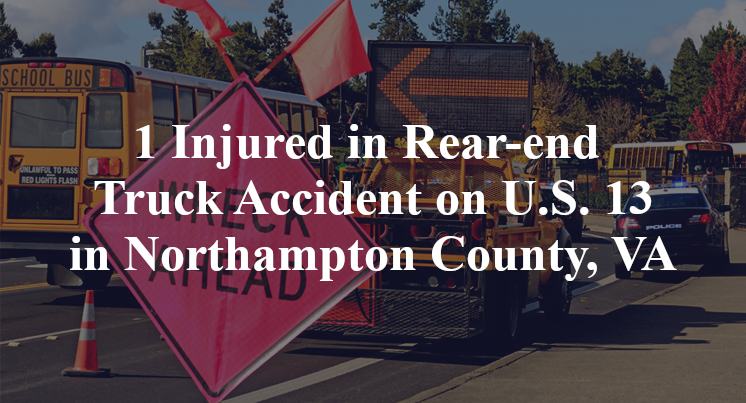1 Injured in Rear-end Truck Accident on U.S. 13 in Northampton County, VA
Northampton County, VA — February 21, 2025, one person was injured in a rear-end truck accident at approximately 9:00 a.m. along U.S. Highway 13 (Lankford Highway).
According to authorities, one person was traveling in a northbound Ford Expedition on Lankford Highway in the vicinity of the Brickhouse Drive intersection when the accident took place.

Officials state that, for reasons yet to be confirmed, the Expedition was rear-ended by a Western Star 18-wheeler that had also been northbound on the highway. Reports indicate that authorities have recommended charges of following too closely against the person who had been behind the wheel of the truck.
The person from the Expedition reportedly sustained serious injuries over the course of the accident, though they were described to have been non-life-threatening. Additional details pertaining to this incident—including the identity of the victim—is not available at this point in time. The investigation is currently ongoing.
Commentary by Attorney Michael Grossman
When an 18-wheeler rear-ends a passenger vehicle, the key question isn’t just what happened, but why it happened. In my experience handling truck accident cases, crashes like this rarely occur without multiple contributing factors that need to be examined.
Why was the truck following too closely? Authorities have already indicated that the truck driver may face charges for following too closely, which raises questions about their behavior before the crash. Was the driver distracted, fatigued, or simply not leaving enough space to stop safely? Investigators should review dashcam footage, phone records, and hours-of-service logs to determine whether distraction or exhaustion played a role.
Did the truck have enough time to stop? Large trucks require significantly more distance to slow down than passenger vehicles. If traffic had slowed ahead, was the truck driver prepared to adjust their speed in time? Investigators should examine speed data, braking distances, and whether the driver was paying attention to changes in traffic flow.
Was the truck’s braking system functioning properly? If the truck driver attempted to stop but the vehicle didn’t respond as expected, that could point to mechanical issues. Investigators should conduct a post-crash inspection to determine whether brake failure or other maintenance problems contributed.
Did broader issues contribute to the crash? Trucking companies are responsible for ensuring their drivers are properly trained and that their vehicles are well-maintained. If a company failed to enforce safe following distances, ignored maintenance schedules, or pressured drivers to keep tight schedules that encouraged risky driving, those failures could be relevant in understanding why this crash happened. Investigators should review company policies, training records, and prior safety violations to determine whether broader issues played a role.
At the end of the day, the most important thing is finding answers. Even if it takes an independent investigation to gather the right evidence, it’s critical to examine every factor to ensure those affected by the crash get the clarity they deserve.

“These are essential reads for anyone dealing with the aftermath of a truck wreck”– Attorney Cory Carlson